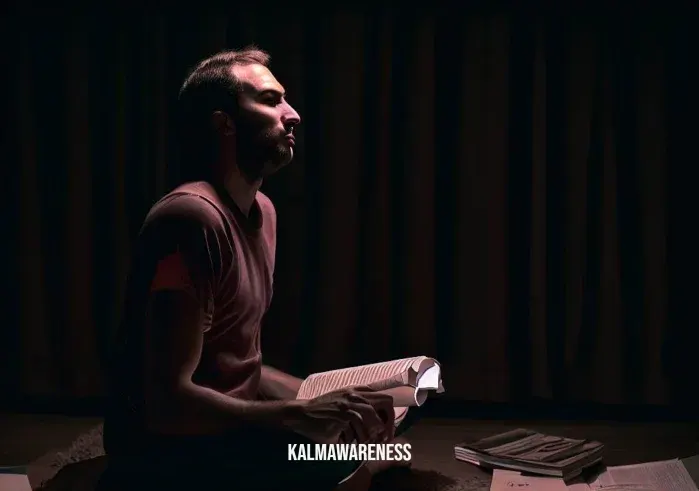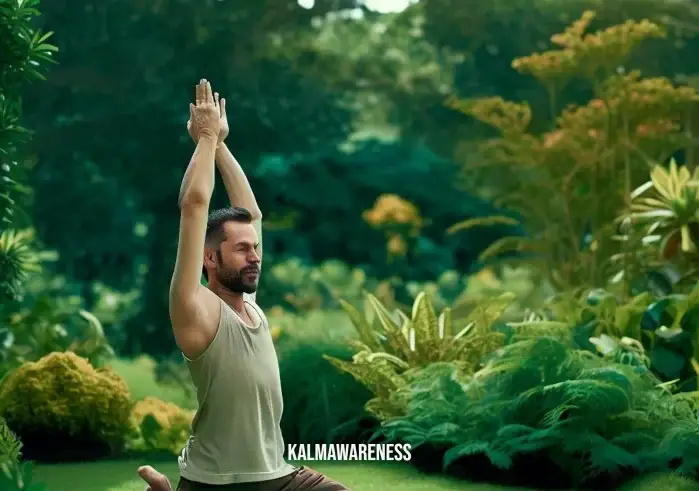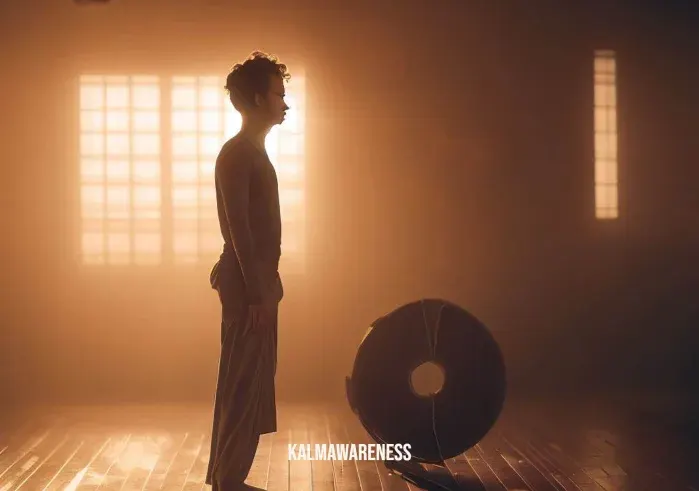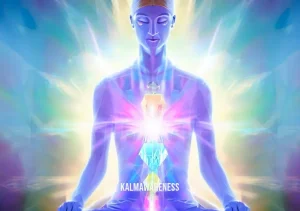Unveiling the Enigmatic Yoga Wheel Pose Chart
In this captivating article, we will explore the Yoga Wheel Pose Chart, a mesmerizing posture that enhances flexibility, strength, and balance. Join me on this journey as we delve into the intricacies of this yoga pose, its original name, difficulty level, category, exercise duration, and step-by-step guide.
Pose Name
The focal point of our article is the Yoga Wheel Pose – an empowering and invigorating asana.
Original Name
The Yoga Wheel Pose is deeply rooted in the ancient practice of yoga and is traditionally known as Chakrasana.
Difficulty Level
Mastering the Yoga Wheel Pose requires a moderate to advanced level of yoga proficiency. It demands flexibility in the spine, shoulders, and hip flexors, making it more suitable for experienced practitioners.
Pose Category
The Yoga Wheel Pose falls under the category of Intermediate to Advanced Backbends. It is a dynamic posture that encourages openness in the front body while strengthening the muscles along the spine.
Exercise Duration | Exact Number of Time
For Beginners: Aim to hold the Yoga Wheel Pose for 15 to 30 seconds initially, gradually increasing the duration as you gain confidence and flexibility.
For Advanced Practitioners: Challenge yourself to sustain the pose for 1 minute or more, embracing the full expression of this exhilarating backbend.
“Embrace the curvature of life, for within the bend lies strength and renewal.” – Yoga Proverb
Step-by-Step Guide
- Preparation: Warm up your body with a few rounds of Sun Salutations to awaken your muscles and prepare for deeper backbends.
- Positioning the Wheel: Sit on your yoga mat with your knees bent and feet planted firmly on the ground, hip-width apart. Place the Yoga Wheel behind your hips, aligning it parallel to your spine.
- Hand Placement: Carefully position your hands behind your shoulders, fingers pointing toward your feet. Your palms should rest on the Yoga Wheel, providing a stable foundation.
- Lifting Your Hips: Inhale deeply and press your hands and feet firmly into the ground. As you exhale, lift your hips off the mat, initiating the backbend.
- Creating the Arch: Engage your core and open your chest as you gently push the Yoga Wheel forward. Allow your head to drop back, maintaining a relaxed neck and steady breath.
- Leg Alignment: Ensure that your knees stay hip-width apart and your thighs are parallel to each other. Keep your feet grounded, distributing the weight evenly.
- Hold and Breathe: Find your balance and hold the pose for the desired duration. Take deep breaths, expanding your chest with each inhalation and surrendering into the backbend with each exhalation.
- Releasing the Pose: To come out of the Yoga Wheel Pose, slowly lower your hips back to the mat, and carefully roll the spine back to a neutral position.
- Rest and Reflect: Take a moment to lie on your back and feel the effects of the posture. Observe any sensations or emotions that arise as you allow your body to integrate the benefits of Chakrasana.

Yoga Wheel Pose Chart: Unveiling its Marvelous Benefits and Variations
In the first part of our enchanting article, we explored the Yoga Wheel Pose Chart, also known as Chakrasana, and its fundamental aspects. Now, let us delve into the fascinating realm of its remarkable benefits, considerations for practitioners who cannot do the pose, and the exciting variations tailored to different levels of experience.
Benefits of the Yoga Wheel Pose Chart
- Spine Flexibility: The Yoga Wheel Pose deeply stretches and opens the spine, promoting flexibility and mobility in the entire vertebral column.
- Strengthens Core Muscles: This backbend engages the core muscles, leading to improved core strength and stability.
- Chest and Shoulder Expansion: As the chest opens and the shoulders roll back, the pose enhances lung capacity and helps alleviate tension in the upper back.
- Hip Flexor Release: Chakrasana stretches the hip flexors, which can be especially beneficial for individuals who spend long hours sitting.
- Heart Chakra Activation: Heart-opening poses like the Yoga Wheel Pose are associated with the activation of the heart chakra, promoting feelings of love, compassion, and emotional balance.
- Energy Boost: The posture invigorates the body and mind, providing a natural energy boost and reducing fatigue.
- Counteracts Rounded Posture: In our modern sedentary lifestyles, where we often hunch forward, Chakrasana counteracts the effects of rounded posture and helps restore natural alignment.
- Improves Spinal Health: Regular practice of the Yoga Wheel Pose can contribute to a healthier spine, reducing the risk of spinal issues.
- Mind-Body Connection: Engaging in this dynamic backbend fosters a deeper mind-body connection, encouraging introspection and self-awareness.
Considerations for Practitioners Who Cannot Do the Pose
While the Yoga Wheel Pose offers numerous benefits, it might not be suitable for everyone. Here are some considerations for practitioners who should avoid or modify the pose:
- Back or Neck Injuries: Individuals with back or neck injuries or conditions should refrain from attempting Chakrasana without the guidance of a skilled yoga instructor.
- Shoulder or Wrist Issues: Those with shoulder or wrist problems should exercise caution or opt for modifications to avoid exacerbating their conditions.
- Pregnancy: Pregnant individuals should avoid deep backbends like the Yoga Wheel Pose, as it could strain the abdomen and compromise the safety of the fetus.
- High Blood Pressure: People with high blood pressure should avoid holding the pose for extended periods and practice it under supervision.
- Osteoporosis: Those with osteoporosis should avoid intense backbends, as it may put excessive pressure on the spine.
- Recent Surgeries: Individuals who have undergone recent surgeries, especially in the spine or abdominal region, should avoid attempting this pose until fully recovered.
Variations of the Pose for Different Levels of Experience
One of the beauties of yoga lies in its adaptability to suit practitioners of varying experience levels. Here are some modifications and variations of the Yoga Wheel Pose:
- Supported Chakrasana: For beginners or those seeking additional support, using a yoga block beneath the hands can provide stability and lessen the intensity of the backbend.
- Wall-Assisted Chakrasana: Practicing against a wall can aid in maintaining alignment and offer support during the pose.
- One-Legged Chakrasana: This variation involves lifting one leg off the ground while maintaining the arch, challenging balance and core strength.
- Revolving Chakrasana: In this variation, one hand reaches back to hold the opposite ankle or foot, deepening the twist and heart opening.
- Chakrasana with Props: Utilizing yoga straps or a partner’s assistance can aid in achieving a deeper backbend and improving flexibility gradually.
- Full Wheel Pose: For advanced practitioners, the Full Wheel Pose involves straightening the arms completely and lifting the head off the ground, creating a full backbend.
As you explore these variations, remember to approach them with patience and mindfulness, honoring your body’s unique needs and limitations.

Yoga Wheel Pose Chart: Unveiling the Rich History and Spiritual Significance
As we continue our enchanting journey into the world of Chakrasana, the Yoga Wheel Pose Chart, we embark on a quest to unravel the captivating history and delve into the profound spiritual significance of this empowering asana. In addition, we will uncover essential tips to maximize the benefits of the pose, common mistakes to avoid, and modifications for those with injuries or limited flexibility. Let us embrace the wisdom of the ages as we explore the depths of this soul-nourishing practice.
The History of the Yoga Wheel Pose Chart
The roots of the Yoga Wheel Pose can be traced back to ancient yogic scriptures and texts. The asana has its origins in the traditional practice of Hatha Yoga, which sought to balance the energies within the body through physical postures. Historically, the pose was known to be a part of the larger repertoire of backbends used to stimulate the energy centers known as chakras.
Throughout the ages, yogis have revered the Yoga Wheel Pose for its transformative qualities, both physically and spiritually. The posture was considered a symbol of resilience, adaptability, and the cyclical nature of life. As yoga spread to different parts of the world, the asana evolved and found its way into modern yoga practices, retaining its essence as a powerful backbend and heart-opening pose.
The Spiritual Significance of Chakrasana
Beyond its physical benefits, the Yoga Wheel Pose holds profound spiritual symbolism. In yogic philosophy, the wheel represents the ever-turning cycle of life, death, and rebirth. It embodies the idea of continuous transformation, reminding practitioners of the impermanence of all things. As the heart center opens during the pose, it symbolizes the awakening of love, compassion, and connection to the divine within and around us.
Chakrasana is also associated with the fourth chakra, known as Anahata, which translates to “unstruck.” This chakra is considered the seat of love and harmony, representing our capacity for unconditional love and healing. Practicing Chakrasana is believed to unlock the energy of the heart chakra, fostering emotional balance and a sense of interconnectedness with all living beings.
Tips for Getting the Most out of Chakrasana
To experience the full essence of the Yoga Wheel Pose Chart, consider the following tips:
- Warm-up Thoroughly: Prioritize a thorough warm-up before attempting the pose to prepare the body and mind for the deep backbend.
- Breathe Mindfully: Maintain steady and conscious breathing throughout the pose, allowing it to guide you deeper into the heart-opening experience.
- Engage the Core: Activate the core muscles to support the lower back and protect the spine during the backbend.
- Use Props Wisely: Utilize yoga blocks, straps, or a wall to provide support and facilitate safe alignment as you explore the pose.
- Embrace Patience: The Yoga Wheel Pose may take time to master. Embrace patience and practice regularly to progress gradually.
Common Mistakes to Avoid
As with any yoga pose, certain errors can hinder your practice and potentially lead to discomfort or injury. Be mindful of the following common mistakes:
- Overarching the Lower Back: Avoid excessive arching of the lower back, as it may strain the lumbar region.
- Rushing into the Pose: Respect your body’s limitations and avoid forcing yourself into the full expression of the pose too quickly.
- Collapsing the Chest: Maintain openness in the chest and shoulders, avoiding hunching forward.
Modifications for People with Injuries or Limited Flexibility
For individuals with injuries or limited flexibility, modifications can allow for a safe and accessible practice:
- Supported Chakrasana: Place a bolster or cushion beneath your back to reduce the depth of the backbend.
- Wall Assistance: Practice the pose against a wall to provide extra support and stability.
- Knee-Bent Variation: Keep your knees bent during the pose to alleviate pressure on the lower back.
Poses Complementary to Chakrasana
To complement and enhance the effects of the Yoga Wheel Pose, consider incorporating the following poses into your practice:
- Child’s Pose (Balasana): A gentle resting pose that counterbalances the backbend, releasing tension in the spine.
- Cobra Pose (Bhujangasana): This backbend strengthens the spine and opens the chest, preparing the body for deeper heart-opening postures.
- Camel Pose (Ustrasana): Another profound backbend that further stretches the front body and expands the heart center.
- Fish Pose (Matsyasana): An uplifting pose that stimulates the throat chakra and expands the chest.





